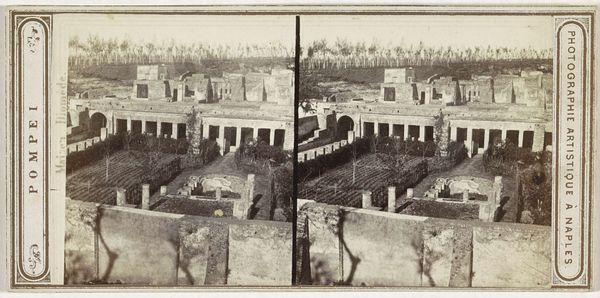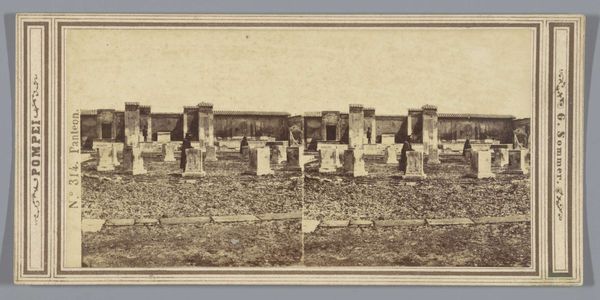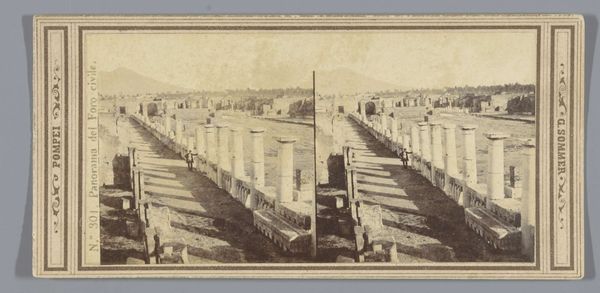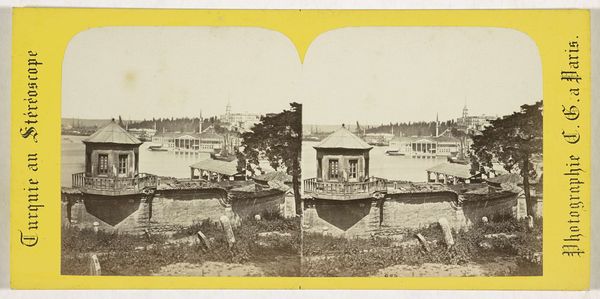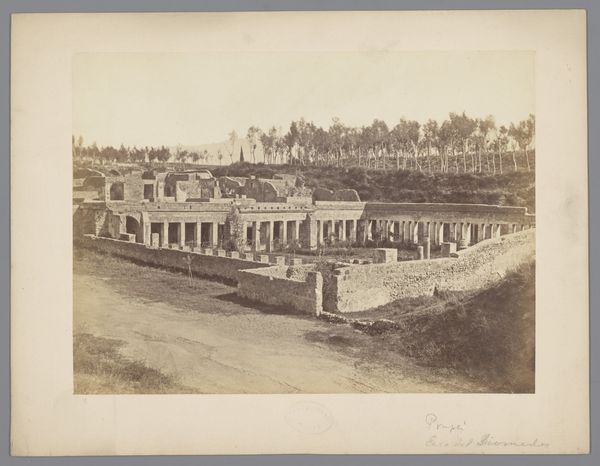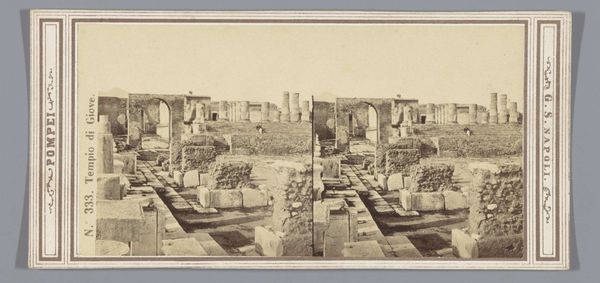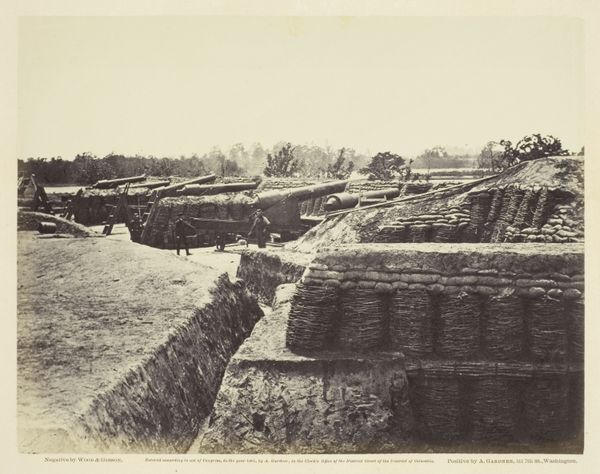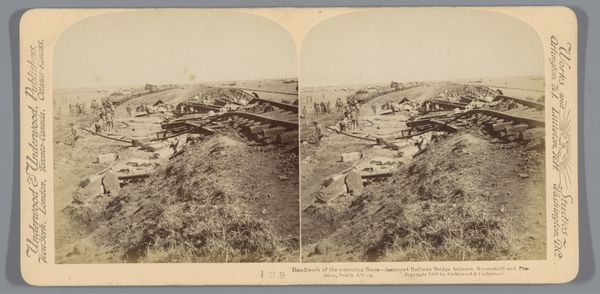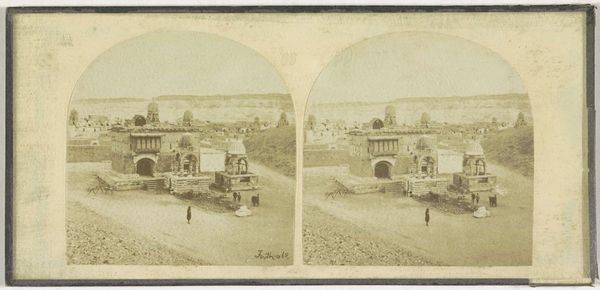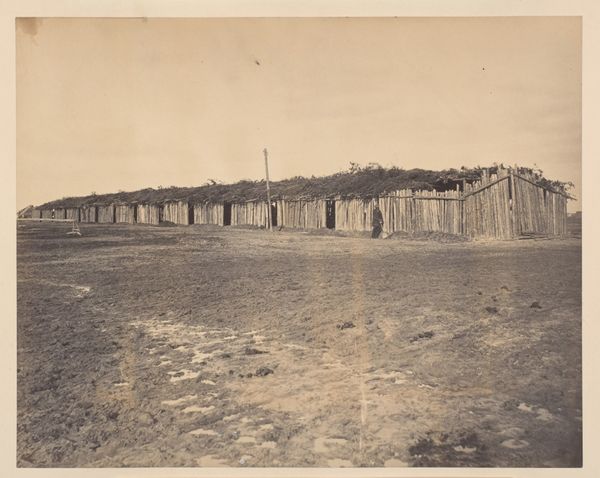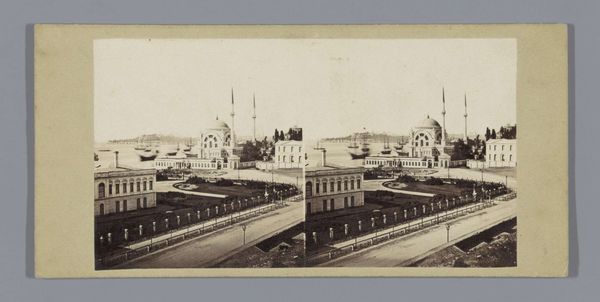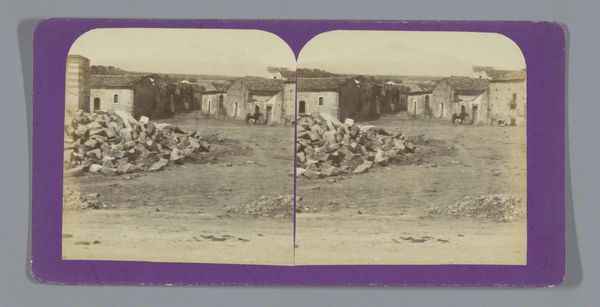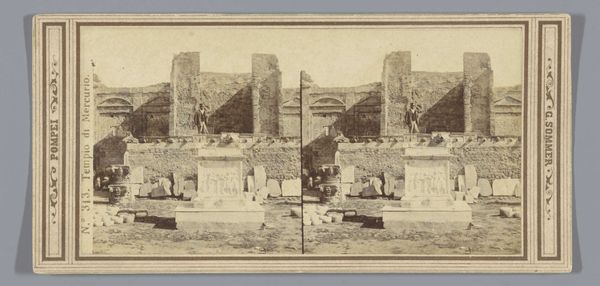
Gezicht op de ruïnes van de Villa di Diomede in Pompeï c. 1860 - 1880
0:00
0:00
Dimensions: height 83 mm, width 172 mm
Copyright: Rijks Museum: Open Domain
Editor: This is Giorgio Sommer's "Gezicht op de ruïnes van de Villa di Diomede in Pompeï", a collotype photograph from between 1860 and 1880. It feels very… distant. How do you interpret this work? Curator: I see this not merely as a picture of Roman ruins but as a document reflecting the 19th century's relationship to classical antiquity, filtered through the lens of Romanticism. It's a collotype, right? Consider the labour involved. The photographer, the printers… Each copy consumed time, materials, and effort, even in reproducibility. Editor: Right. It’s not just snapping a photo with your phone. It’s a whole process. Curator: Exactly! How does this impact its perceived value, especially at a time when photography was still finding its place amongst ‘high art’ forms? Were these mass produced for sale? The ruins themselves – they speak of empire, of catastrophe, of lost ways of life. Now captured by a relatively new mode of image production to be circulated. Are they aestheticized, historicized or commodified? What statement is the photographer making here, about society or labour perhaps? Editor: That’s interesting…it really is an object of production. But looking at it makes me question the relationship between industry, history and the consumption of images. Curator: Precisely. This photo exemplifies the intersection of labor, materials, and historical narrative within 19th-century visual culture. Editor: So much more than just a picture of ruins, really highlighting a whole manufacturing and economic relationship between us and it, plus our gaze upon history. Curator: A worthwhile consumption of history, I'd say.
Comments
No comments
Be the first to comment and join the conversation on the ultimate creative platform.
